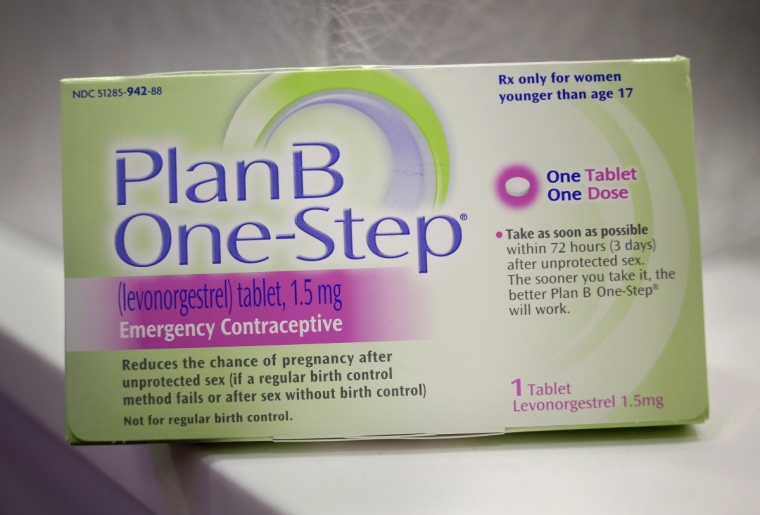Are abortionists losing? National abortion rates dropping, CDC says

ATLANTA (Christian Examiner) – Controversy about the cause of the new report from the Center for Disease Control (CDC) about nationally dropping abortion rates has brought two perspectives about American culture head to head.
In 2012, 699,202 legal induced abortions were reported to CDC, the abortion rate was 13.2 abortions per 1,000 women between the ages of 15 and 44, and the abortion ratio was 210 abortions to every 1,000 live births, in what it termed "historic lows" since the 1980s. These numbers exclude abortions performed in the state of California, which does not report the statistics to the CDC.
"We should take a measured amount of encouragement that we are on the right track," Eric Scheidler, the head of the Pro-Life Action League, told LifeSiteNews. "But there is still a massive, massive amount of injustice against the unborn, so we must stay on the track."
Now, the Planned Parenthood-affiliated Guttmacher Institute has released a study based on the CDC's numbers claiming the decreases have nothing to do with decreases in the number of abortion providers.
"The national abortion rate has resumed its decline, and no evidence was found that the overall drop in abortion incidence was related to the decrease in providers or to restrictions implemented between 2008 and 2011," concluded Rachel K. Jones and Jenna Jerman, the authors of "Abortion Incidence and Service Availability in the United States, 2011," published in Guttmacher's Perspectives on Sexual and Reproductive Health.
The CDC says the number and ratio of reported abortions decreased 4%, and the abortion rate decreased 5% from 2011. Compared with 2003, the decrease in the number, rate, and ratio of reported abortions was 17%, 18%, and 14%, respectively.
ERRONEOUS CONCLUSIONS
Priscilla Coleman, Professor of Human Development and Family Studies at Bowling Green State University and the director of the World Expert Consortium for Abortion Research and Education (WECARE), refuted Jones and Jermans' claims.
"Despite what looks like an obvious association between pro-woman laws that foster sounder abortion-related medical decisions and the pattern of declining rates, our friends at the Guttmacher Institute prefer to attribute their findings to unmeasured factors (supposed declines in unintended pregnancy rates and increased use of contraception)," Coleman wrote.
"They argue that the recent proliferation of abortion laws is likely unrelated to the reduced abortion rate, using examples of states that have not enacted regulations, yet evidenced declines."
Coleman argues the study ignores the fact that states with the greatest decreases had the greatest regulations implemented, adding the nation's cultural attitude toward abortion is undergoing a shift. She says the "simplistic," non-peer-reviewed argument fails to incorporate the "enormous amount of national media attention with psychological effects surely crossing state lines."
The Guttmacher Institute, which describes itself as a "special affiliate" of Planned Parenthood, attributes the decline of the abortion numbers to contraception. "When we look at where contraceptives became more available, it matches where the abortion rate falls," said Gilda Sedgh, senior research associate at Guttmacher, according to LifeSiteNews.
PRO-LIFE CULTURE
Coleman disagrees. "Moreover," she said, "it is quite likely that the increased efforts made by the majority of US states to effectively regulate and protect women from poor medical decisions, is a reflection of a culture that has grown to understand the complexities of abortion and the numerous adverse consequences it often brings to women, families, and society."
Scheidler agrees with Coleman, saying a "massive surge in pro-life legislation has had a major impact" on abortion numbers.
Scheidler also sees a shift in the cultural attitudes toward abortion as being brought about by the vast success of anti-abortion activists. "But the numbers are certainly down," he said, "and we also have to credit the increase in pro-life activities around abortion clinics from groups such as 40 Days for Life, and the increased visibility of abortion victim photography."
Forty Days for Life, a Christiana community-based campaign that shows local communities the consequences of abortion, claims responsibility for 11,165 lives saved since 2007.
Regarding the Guttmacher Institute's article, Coleman concludes its data proves the opposite of its conclusion. "The take-home message from this article is that abortion rates are declining and that there is a strong possibility that the enactment of pro-woman, pro-life laws are at least partly responsible," Coleman added.